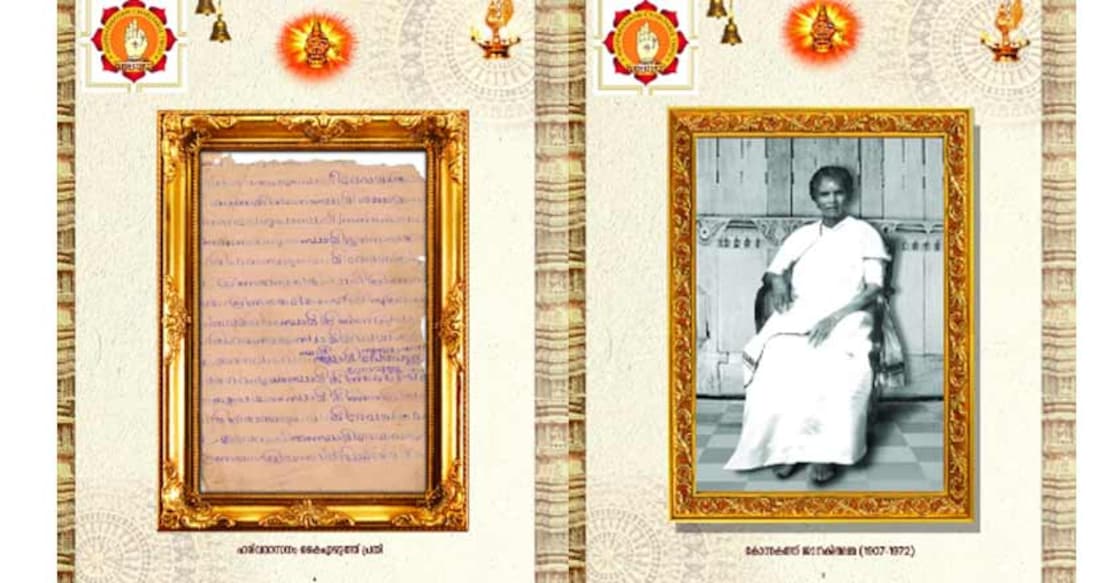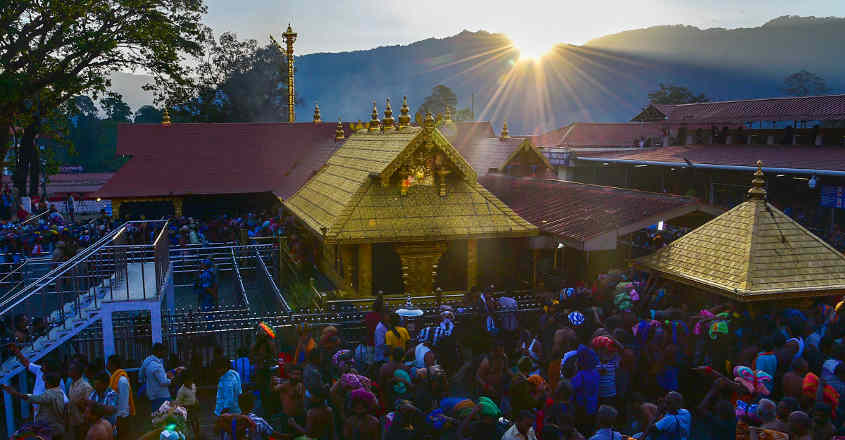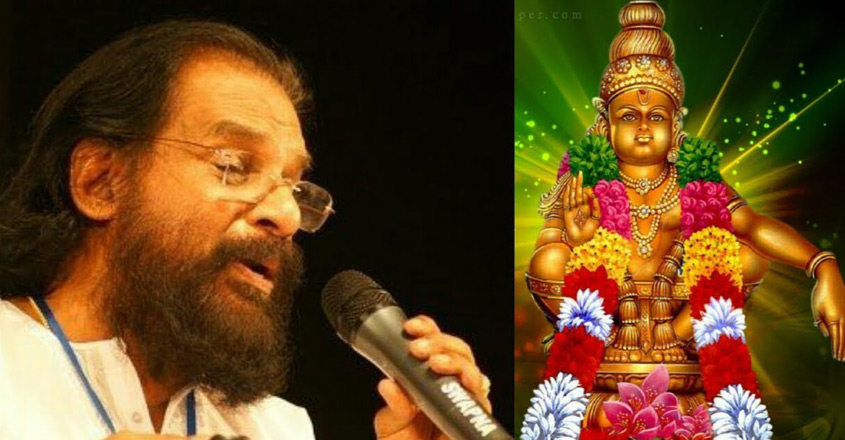Sabarimala ban no bar, this woman sings Ayyappa to sleep

Mail This Article
Nearly a century ago, much before Kanakadurga and Bindhu walked into the sanctum sanctorum of Sabarimala temple, a woman had sneaked her way into the hill shrine and she continues to make her presence felt. Her Sanskrit verses alone can lull Lord Ayyappa to sleep.
In keeping with Sabarimala's tradition of keeping women out, Konnoth Janakiamma, too, was not allowed space in the shrine's history. The credit for the lullaby 'Harivarasanam Vishwamohanam' was given to men.
Three men and a lullaby
For many years it was believed that the shlokas originated from the pen of Kambakkudi Kulathur Iyer. In the early fifties it was said that the verses were penned by the great Sanskrit scholar Eashwaran Namboodiri, who was also the Sabarimala melshanthi when the temple reopened after a mystery fire had burnt it down in 1950. There are records to show that 'Harivarasanam' became a popular Ayyappa bhajan after the fire.
Then, in the seventies, there were people who believed that the bhajan was penned by the legendary lyricist Vayalar Ramavarma. This was after the bhajan was magically reinvented by Devarajan and K J Yesudas for the 1975 film Swami Ayyappan. If Devarajan had given the music, the logic was that Vayalar had to be the lyricist. Vayalar himself had quashed this rumour.
Grammar mistakes
There are no historical records to prove whether Eashwaran Namboodiri had claimed 'Harivarasanam' as his or had disowned it. Nonetheless, Sanskrit scholars feel that had Namboodiri known that he was held up as the creator of 'Harivarasanam' he would have quickly distanced himself from the bhajan. Lack of grammatical rigour is the reason.
“Namboodiri was a great Sanskrit scholar who has famed Sanskrit keerthanas like 'Poojapushpamanjari' to his credit. It is not the sheen of knowledge or poetic brilliance that lights up 'Harivarasanam'. It is pure bhakthi that throbs in these lines,” said historian Suresh Madhav in an article he wrote for Bhashaposhini in 2013.
Grave errors, which would embarrass a scholar of Namboodiri's stature, have been identified in the bhajan's rhythm and meter. The second line of the first shloka (Haridadhiswaram Aaradhyapadhukam), for instance, has a meter that is completely at odds with the rest. This is unacceptable in Sanskrit. Many say that the words used in the third line of the seventh shloka (Kalabhakesarim Vajivahanam) are inappropriate. “The line lends itself to rhythmic glory but falters grammatically,” Madhav said.

Mr Iyer, the anonymous
As for the third man, Kambakkudi Kulathur Iyer, there are documents that hint that he was not the man behind the bhajan. The bhajan was first published in 1963 in a keerthana collection titled 'Harivarasanam Vishwamohanam'. On the cover it said “Compiled by Kambakkudi Kulathur Iyer”. The man who compiled the collection gradually, by mistake or design, transformed into the writer of 'Harivarasanam'. Nothing else about Iyer – his native place, profession or other works, if at all he had created anything – is known.
The most telling evidence that connects Janakiamma to 'Harivarasanam' is the bhajan written in her own hand. The dog-eared handwritten page torn from Janakiamma's notebook was published in Bhashaposhini along with Suresh Madhav's article. He had found the handwritten verse in Janakiamma's house.
Letter of disquiet
Suresh Madhav had also found an unpublished letter K S Purushothaman Pillai, the son of Janakiamma, had written to Malayala Manorama. The letter was written on December 16, 2002, in response to an article that appeared in the paper a couple of days ago.
The article had said that 'Harivarasanam' was Kulathur Iyer's creation, and that it was 42 years old. Purushothaman wrote that the bhajan was written by his mother over 80 years ago, in the Malayalam year of 1098 (1923), when she was 30 and pregnant with her sixth child. (The child, incidentally, was christened Ayyappan.) Purushothaman said he had the handwritten copy of the bhajan with him, and was willing to hand over the proof to the paper. The letter, for reasons known only to Purushothaman, was not posted. He died in 2006.

A lullaby's odyssey
Konnoth Janakiamma has strong connections to Sabarimala. She was the daughter of Ananthakrishna Iyer, considered the last oracle of Sabarimala. Her knowledge of Sanskrit came from her father. Her grandson P Mohan Kumar said that after finishing the 'Harivarasanam' keerthana, she gave it to her father Ananthakrishna Iyer who in turn took it to Sabarimala and surrendered it as an offering to Lord Ayyappa.
“She sang the bhajan for the first time at the Anandeshwaram Siva Temple near her house in Purakattu (Alappuzha). One of the bhajana groups that frequent the temple took down the verses from her. It was they who carried the song from temple to temple and then eventually to Sabarimala,” Kumar said.

Janakiamma, however, was not lucky enough to hear the most popular version of her creation, the one that Ayyappa hears before he falls asleep. She died in 1972, three years before Devarajan and Yesudas created magic with her words.
On January 2, 2019, Kanakadurga, 44, and Bindhu, 42, had entered the hill shrine, three months after the Supreme Court allowed women of all age groups to enter the temple. Following their entry, the head priest decided to close the sanctum sanctorum in order to perform the purification ceremony. Kerala witnessed several violent clashes after right wing organisations called a hartal in the state to protest against the entry of women in the shrine.


